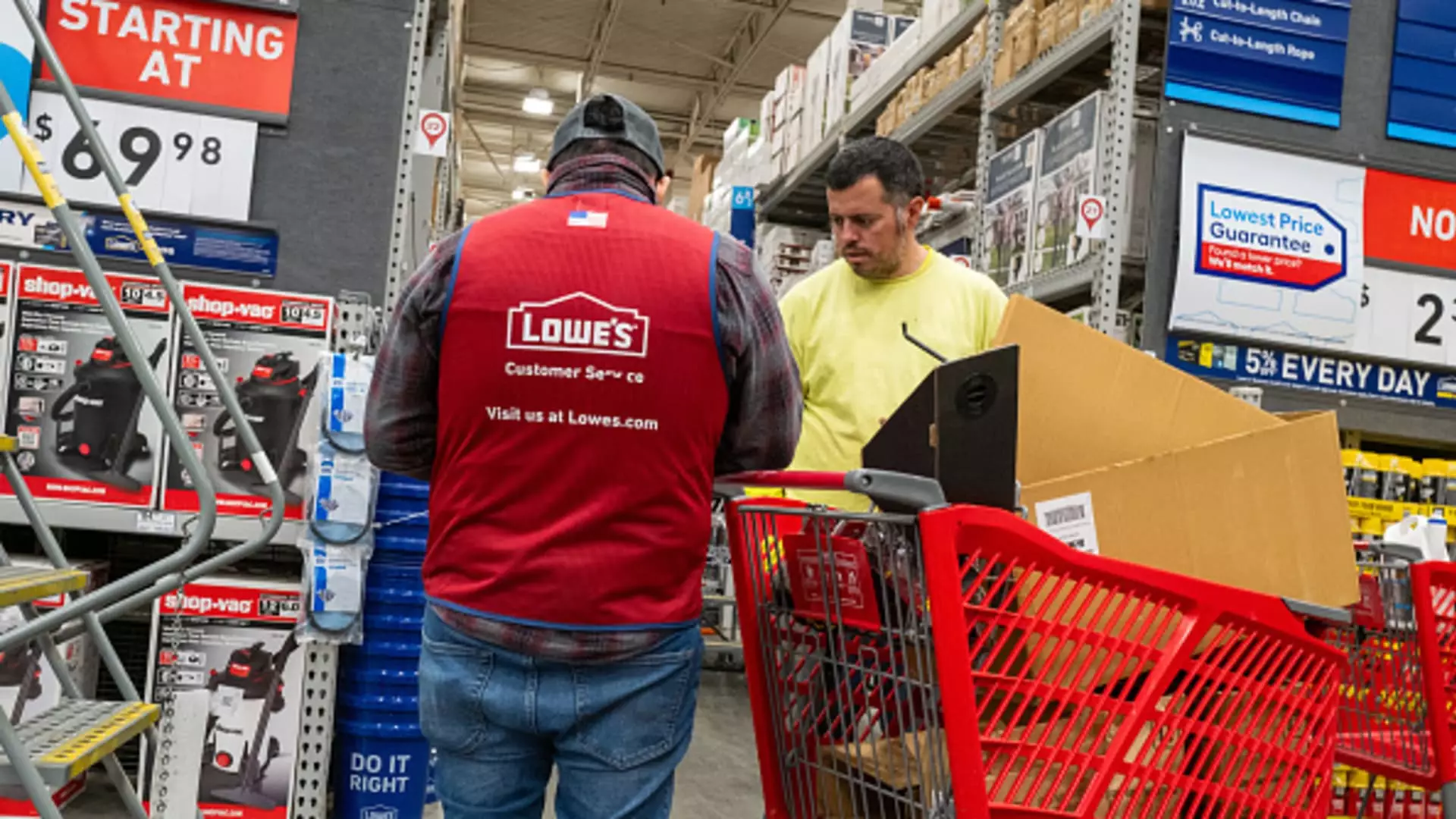Lowe’s recent announcement of cutting its full-year forecast due to a decline in quarterly sales is a concerning development. The company now projects weaker home improvement spending in the second half of the year, which has led to a reduced total sales projection. The new forecast ranges between $82.7 billion and $83.2 billion, down from the previous expectation of $84 billion to $85 billion. Similarly, the company anticipates a 3.5% to 4% decline in comparable sales, compared to the earlier estimate of a 2% to 3% decrease. Adjusted earnings per share are also expected to be lower, falling between $11.70 to $11.90 from the prior outlook of $12 to $12.30. This downward revision reflects the challenging economic environment facing retailers like Lowe’s.
In an interview with CNBC, CEO Marvin Ellison pointed towards consumers waiting for the Federal Reserve to cut interest rates as a key factor influencing their behavior. The anticipation of a rate cut has put pressure on shoppers, causing them to delay major purchases like home improvement projects. With inflation remaining high, consumers are hesitant to take on big-ticket projects until interest rates fall. The uncertainty surrounding the timing of the rate cut adds to the challenge of predicting when home improvement activity will pick up again. Ellison highlighted that Lowe’s customers, who are mostly homeowners with fixed 30-year mortgage rates below 4%, are reluctant to incur additional costs due to higher interest rates. This hesitance is impacting the overall sentiment in the housing market.
Financial Performance and Market Response
Lowe’s reported mixed results for the fiscal second quarter compared to Wall Street expectations. While adjusted earnings per share of $4.10 exceeded analyst estimates of $3.97, revenue of $23.59 billion fell short of the expected $23.91 billion. The company experienced a decline in net income and net sales, with comparable sales dropping 5.1% year-over-year for the sixth consecutive quarter. Factors like unfavorable weather and reduced discretionary spending contributed to these declines. However, growth in online sales and sales to home professionals partially offset the overall sales decline. The market responded to Lowe’s results with skepticism, as the company’s stock closed at $243.21, reflecting a year-to-date gain of only 9% compared to the S&P 500’s nearly 18% increase.
The broader economic landscape and consumer sentiment are playing a significant role in shaping Lowe’s forecast and performance. Recent economic data, including lower-than-expected jobs growth, has raised concerns about household financial health. The looming possibility of a Federal Reserve rate cut has further added to the uncertainty. Competitor Home Depot also expressed caution about the back half of the year, citing consumer deferral mindset and economic uncertainty. Despite these challenges, Lowe’s CEO remains optimistic about the long-term prospects of the home improvement industry. Factors such as aging housing stock, increased household formation, and changing consumer preferences offer growth opportunities for the sector. However, the timing of this expected growth remains uncertain, as the industry grapples with current market conditions.
The revision of Lowe’s forecast underscores the challenges faced by retailers in a changing economic environment. Consumer behavior, interest rates, and overall economic uncertainty are significant factors impacting the company’s performance. While there are positive long-term prospects for the home improvement industry, near-term headwinds pose a challenge for companies like Lowe’s. Adapting to evolving market conditions and consumer preferences will be crucial for navigating the current landscape and positioning for future growth.

